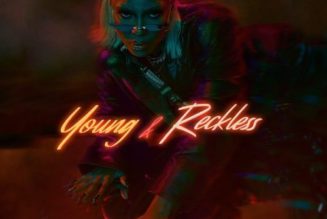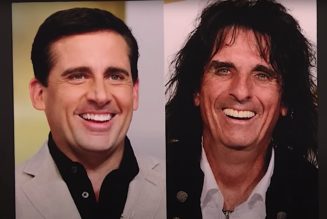
Love film? Love music? Steve Matteo’s “Act Naturally: The Beatles on Film” is the book that you didn’t even know you needed. During their seven-year heyday as innovative recording artists, the Beatles produced five films. Not all of them, as with their legendary musical output, would be considered groundbreaking — and depending upon your taste, possibly not even good. But what they did accomplish, unquestionably, was to redefine the means via which pop musicians brought their wares to the marketplace.
In fascinating detail, Matteo’s book demonstrates the myriad ways in which the Beatles and their inner circle exploited their moving image to build an empire that lasts into the present day. As Matteo reveals, the band’s film productions — “A Hard Day’s Night” (1964), “Help!” (1965), “Magical Mystery Tour” (1967), “Yellow Submarine” (1968), and “Let It Be” (1970) — act as key reference-points for the various phases of the band’s unparalleled career. Indeed, “A Hard Day’s Night” celebrates their mop-top era, while “Help!” and “Magical Mystery Tour” provide touchstones for the mind-altering substances — weed and acid, respectively — that left an indelible stamp on their music. And, depending upon which camp you subscribe to, “Let It Be” may just be rock ‘n’ roll’s all-time breakup movie.
Film aficionados will take special note of Matteo’s lavish attention on the historical origins and making of “A Hard Day’s Night,” the consensus masterwork among the lot. Matteo situates Richard Lester’s elegantly photographed rock musical, with its crisp black-and-white tableau, within the evolving tradition of New Wave cinema.
Readers will enjoy peeking under the hood when it comes to the Beatles’ films. Take the famous sequence that graces the beginning of “A Hard Day’s Night” — the high-octane scene in which the Beatles run for their lives across the London streetscape with a bevy of fans rabidly nipping at their heels.
In Matteo’s words, “[T]he opening sequences of the film immediately convey the new youthful flowering of post-war England, as exemplified by the bustling capital city and the country’s most striking example of the new exuberance and style of the Beatles.”
Love the Beatles? Listen to Ken Womack’s “Everything Fab Four” podcast.
But it’s more than that. As Matteo shrewdly points out, “Fans of the French New Wave might detect a similarity to a key scene from François Truffaut’s ‘Jules and Jim’ (1962), when Jules (Oskar Werner), Jim (Henri Serre), and Catherine (played by Jeanne Moreau and dressed as a man, complete with moustache and cigar) have a race running over a bridge. The youthful exuberance and sheer joy of both scenes reflect a freedom and carefree camaraderie of the burgeoning youth culture.”
Matteo’s book doesn’t end with the Beatles’ standard film canon, extending beyond the boundaries of their career as a working rock ‘n’ roll band to subsequent reissues, as well as Peter Jackson’s much-ballyhooed documentary “The Beatles: Get Back” (2021). Steven Van Zandt recently observed that growing up in the 1960s, with music and film culture blooming like never before, was an artistic Renaissance in its own right. With “Act Naturally,” Matteo demonstrates how the Beatles, as the 20th-century Renaissance’s undisputed masters, bent their chosen media — musical and visual culture alike — to their will.
Read more
about the Beatles









